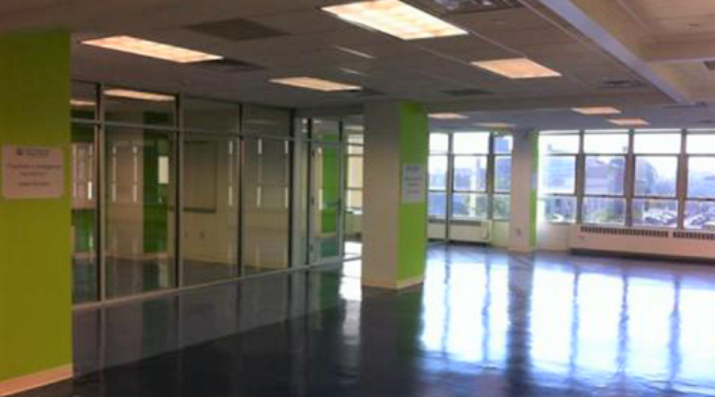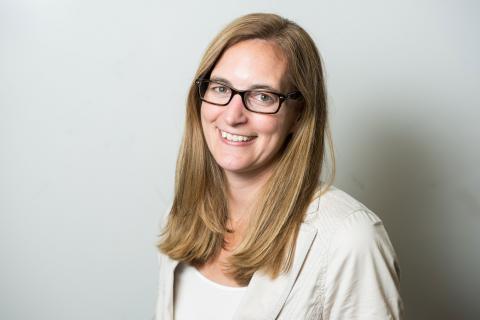New Designs for School
Blended Learning Classroom Design at Merit Prep
Topics

We’ve all had the experience of truly purposeful, authentic learning and know how valuable it is. Educators are taking the best of what we know about learning, student support, effective instruction, and interpersonal skill-building to completely reimagine schools so that students experience that kind of purposeful learning all day, every day.
How do you design a space for next gen learning? Merit Prep created classroom spaces that accommodate team-teaching within a flex blended learning model.
How do you design a space for next gen learning?
At Merit Prep in Newark, New Jersey, personalized learning means that students advance through material at their own pace and demonstrate mastery of standards in ways that reflect critical thinking and creativity. They work through a daily playlist that teachers customize for students; the playlist contains both online content and teacher-led instruction focused on a specific set of skills.
When designing this academic model, Merit Prep’s founders had a lot to think about: What does the schedule look like? How do we staff this model, and how do we prepare teachers for this kind of teaching? What digital platforms, data tools, and digital content providers should we use? What will our classroom space look like?
That’s right; when you redesign how students learn in K-12, the physical space of traditional classrooms that were designed to fit one teacher and perhaps 20-35 students can actually constrain your model. To accommodate its personalized “flex” approach, Merit Prep scrapped traditional classrooms in favor of creating new kinds of spaces with team-teaching and blended learning in mind.
Next Gen Tools: Blended Learning Classroom Design, a two-page brief released by NGLC today, describes Merit Prep’s conversion of a former office building into a school complete with “stadiums” and “skyboxes” as the spaces for learning.
The learning space accommodates a large group of students working independently with a team of teachers, who provide individual support and small group instruction.
What does that mean?
"With three teachers in the classroom, students have access to the best teacher for the best activity, any time they need it."
–Ben Rayer, Merit Prep's CEO and Founder
Team-teaching is not easy—as Rocketship Education discovered when they tried to implement 100-student, 3-teacher, 1-academic coach “flexible” classrooms last year. According to EdSurge, the charter organization is going back to the “rotational” blended learning model they had been using.
Blended Learning Classroom Design identifies that one of the challenges with the flex model and the large classrooms is helping Merit Prep’s teachers assume new roles and navigate team-teaching. But the brief also describes the professional development that the school embedded into the model—the kind of authentic mentoring that comes from novice and master teachers teaching together that couldn’t happen if teachers were isolated in their own classrooms.
Given its charter organization’s recent merge with Matchbook Learning—a school developer that emphasizes coaching for teachers in its support for school turnarounds—Merit Prep will only increase the attention it gives to professional development for blended instruction
What is the advantage for students?
Find the answer, along with a copy of the school’s architectural floor plan, in Next Gen Tools: Blended Learning Classroom Design. Then compare Merit Prep’s approach to the use of space at San Diego’s e3Civic High, which is documented in Next Gen Tools: e3 Civic High School Facility.
The ongoing Next Gen Tools series describes the innovations that breakthrough model developers—in K-12 and higher ed—need to create in order to make their completely redesigned academic and organizational models function effectively. View all published briefs in the series.




